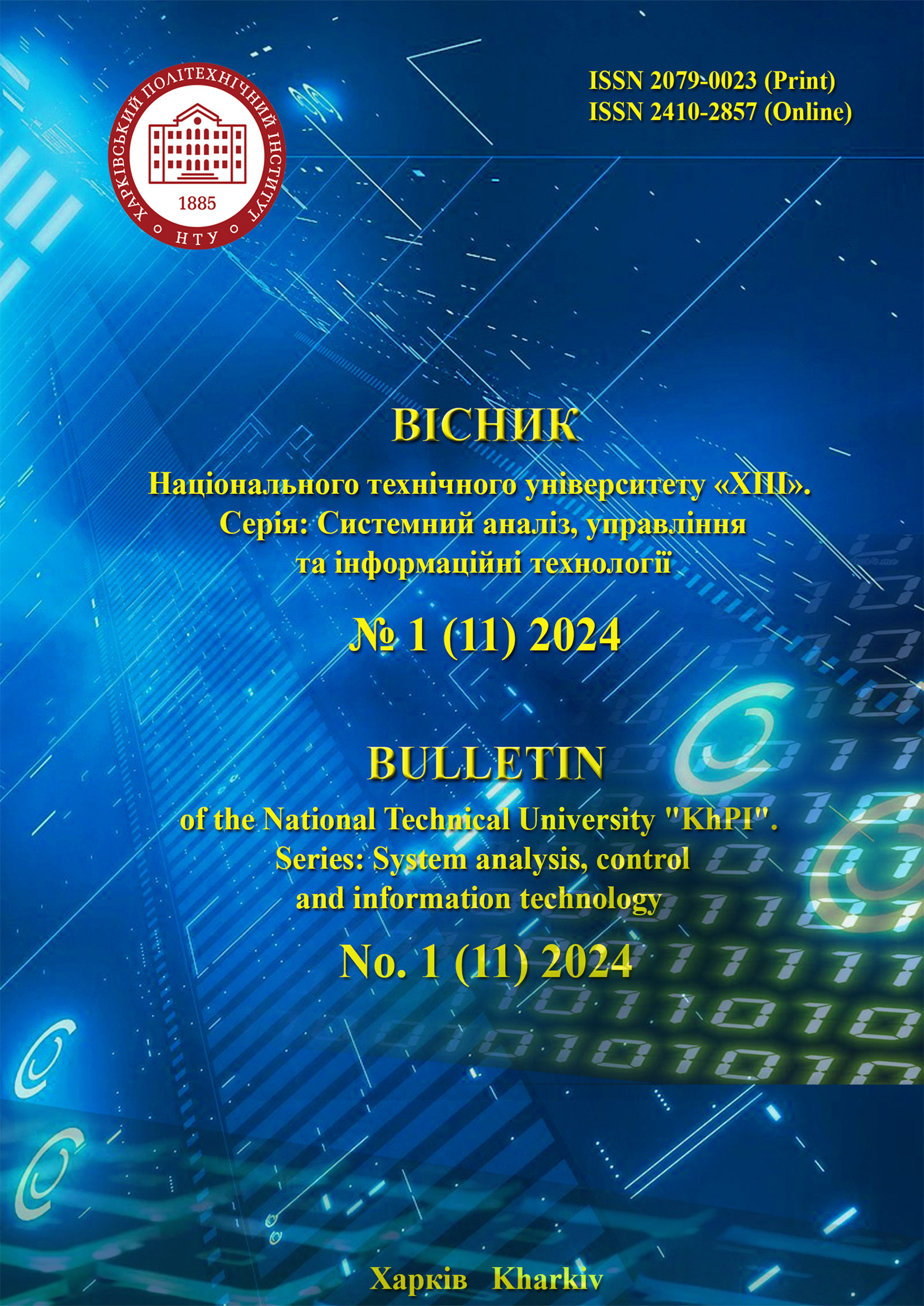TWO-LEVEL CONCEPT FOR SIMULATING UNIFORM INTERFERENCE-RESISTANT DIGITAL DATA TRANSMISSION
DOI:
https://doi.org/10.20998/2079-0023.2024.01.11Keywords:
noise immunity, immunity codes, data security, data channels, VPN, CIA, NIST, OWASPAbstract
The article formalizes, creates and provides for consideration the concept of a single secure interference-resistant data transmission channel. In modern cybersecurity theory and practice, there is the NIST Cybersecurity Framework, which is a set of recommendations for reducing risks for organizations. In order for high-level data to be secure, there are requirements for the SIA triad, namely confidentiality, integrity and availability of information. Therefore, in the future, the expediency of the work and its result will directly depend on the satisfaction of the SIA conditions. As you know, high-level data: such as e-mail, visual data in the GUI of various applications, etc., are transmitted over low-level communication channels: such as cables, wireless radio communication channels, and others. At each of the levels for safe transmission of information, there are specific pests. At high levels, the main threat to information is man and the human factor. The lower the level of information transmission becomes, the more nature, natural obstacles and random short phenomena begin to influence. In order for the user to be able to use various devices without a threat to the confidentiality, integrity and availability of information, it is necessary to actively and continuously develop, improve and improve the existing methods of data protection, restoration, transmission and storage. Each aspect in this struggle for security is both an advantage and a disadvantage: excessive security is not appropriate for mass traffic, complexity does not always provide adequate security, and so on. Therefore, the optimality and expediency of the methods used becomes an important factor. For these reasons, the paper proposes a relatively simple, but no less effective approach to maintaining SIA requirements.
References
Nieles M., Dempsey K., Pillitteri V. Y. An Introduction to Information Security. National Institute of Standards and Technology Special Publication 800-12 Revision 1, June 2017. 101 p. Available at: https://nsarchive.gwu.edu/document/22632-document-07-michael-nieles-kelley-dempsey-and (accessed 25.04.2024).
Stallings W., Brown L. Computer Security : Principles and Practice. New Jork, Prentice Hall, 2008. 817 p.
Pfleeger C. P., Pfleeger S. L. Security in Computing. New Jersey, Prentice Hall, 2003. 746 p.
Tiller J. S. The Ethical Hack: A Framework for Business Value Penetration Testing. Auerbach Publications, 2005. 352 p.
Sharov V. O., Nikulina O. M., Severyn V. P. Modelyuvannya ta analiz koderiv zavadostiikyh kodiv dlya dynamychnykh system [Modeling and analysis of coders of secure cascade codes for dynamic systems]. Vestnik Nats. tekhn. un-ta "KhPI": sb. nauch. tr. Temat. vyp.: Sistemnyy analiz, upravlenie i informatsionnye tekhnologii [Bulletin of the National Technical University "KhPI": a collection of scientific papers. Thematic issue: System analysis, management and information technology]. Kharkiv, NTU "KhPI", Publ., 2023, no.1 (9), pp. 64–69. (In Ukr.).
Sharov V. O., Nikulina O. M., Severyn V. P. Rozrobka modeli zavadostiykoji peredachi danyh dlja informatsiynoji tekhnologiji optymizatsii upravlinnja dynamichnymy sistemamy [Development of a data transfer model for information technology optimization of dynamic systems control]. Vestnik Nats. tekhn. un-ta "KhPI": sb. nauch. tr. Temat. vyp.: Sistemnyy analiz, upravlenie i informatsionnye tekhnologii [Bulletin of the National Technical University "KhPI": a collection of scientific papers. Thematic issue: System analysis, management and information technology]. Kharkiv, NTU "KhPI", Publ., 2022, no. 2 (8), pp. 57–62. (In Ukr.).
Sharov V. O., Nikulina O. M., Loshkaryova S.E. Rozrobka gnuchkoi modeli zavadostiikoi peredachi danyh dlya upravlinnya dynamychnymy systemamy [Development of a flexible model of data transmission for controlling dynamic systems]. Information technologies: science, engineering, technology, education, health: Abstracts of the XXXI International Scientific and Practical Conference MicroCAD-2023. Kharkiv, NTU "KhPI", Publ., 2023, p. 1048. (In Ukr.).
Zakharchenko N. V., Gorokhov S. M., Kochetkov A. V. Informatsijni parametry pozitsijnyh kodiv [Information parameters of positional codes]. Odesa, ONAS Publ., 2018. 212 p. (In Ukr.).
Eklund J.-E., Arvidsson R. A multiple sampling, single A/D conversion technique for I/Q demodulation in CMOS. IEEE Journal of Solid-State Circuits. 1996, vol. 31, is. 12, pp. 1987–1994.
Blahut R. E. Theory and Practice of Error Control Codes. Addison-Wesley Publishing Company, 1983. 500 p.
Losev Yu. I., Shmatkov S. I. Osnovy teotiji peredachi informatsiji [Fundamentals of the theory of information transfer]. Kharkiv, KhNU named V. N. Karazina Publ., 2013. 290 P. (In Ukr.).
Yue Tang, Tian Mao, Bing Jiang Design and Experiment of Multi-resolution Composite Digital Array Antenna. Journal of Radars, 2016, 5 (3). pp. 265.
Banket V. L., Ivashchenko P. V., Ishchenko M. O. Zavadostijke koduvannja v telekomunatsijnyh systemah [Interference-resistant coding in telecommunication systems]. Odesa, ONAZ named O. S. Popova Publ., 2011. 100 P. (In Ukr.).
Zhurakovsky Yu. P., Poltorak V. P. Teorija informatsiji ta koduvannja [Theory of information and coding]. Kyiv, Vyshcha shk. Publ., 2001. 255 p. (In Ukr.).
Kozhevnikov V. L., Kozhevnikov V. L. Teorija informatsiji ta koduvannja [Theory of information and coding]. Dnipropetrovsk: NGU Publ., 2011. 108 p. (In Ukr.).
Downloads
Published
How to Cite
Issue
Section
License

This work is licensed under a Creative Commons Attribution 4.0 International License.
Authors who publish with this journal agree to the following terms:
- Authors retain copyright and grant the journal right of first publication with the work simultaneously licensed under a Creative Commons Attribution License that allows others to share the work with an acknowledgement of the work's authorship and initial publication in this journal.
- Authors are able to enter into separate, additional contractual arrangements for the non-exclusive distribution of the journal's published version of the work (e.g., post it to an institutional repository or publish it in a book), with an acknowledgement of its initial publication in this journal.
- Authors are permitted and encouraged to post their work online (e.g., in institutional repositories or on their website) prior to and during the submission process, as it can lead to productive exchanges, as well as earlier and greater citation of published work (See The Effect of Open Access).


